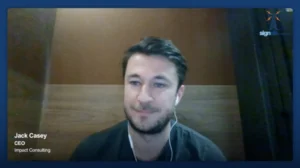Survey Says! Banks Could Give E&Ps New Lease On Life
How are energy prices impacting the banking and capital ecosystem in the oil and gas industry? With so much volatility and uncertainty in today’s market, oil and gas producers need information they can trust, which is where Haynes and Boone LLP, an international law firm that provides services for more than 40 significant legal practices, comes in. The firm’s latest “Borrowing Base Redeterminations Survey: Spring 2022” is one consistent bellwether of such information. The bi-annual survey is widely regarded as a reliable barometer of the lending community’s appetite to provide capital to oil and gas companies in support of their exploration and production (E&P) activities.
E2B: Energy to Business host Daniel J. Litwin caught up with Steve Hendrickson, President of Ralph E. Davis Associates, an Opportune LLP company, to discuss some of the survey’s key findings and external factors that may have influenced its conclusions.
Oil and gas assets deplete over time, causing their value to also decline. Conversely, when price fluctuations occur like the world is currently seeing, values can increase. Recalculating those assets is an essential component of reserved-base lending (RBL), so the industry needs to know the market’s direction for accurate borrowing purposes.
RBL has been a critical source of capital for the oil and gas industry for decades. It has typically been an attractively priced source of capital because lenders have a senior debt position, their loan is secured by a mortgage on the leasehold and the loan value is based primarily on proved developed reserves using a conservative price deck. Additionally, loan agreements contain various covenants to protect lenders such as minimum and maximum hedge levels, regular borrowing base redeterminations, specific financial statement tests, and various affirmative and negative covenants.
In RBL, one of the most critical pieces of information lenders rely on is a proved reserve report. These reports are typically prepared by a third-party engineering practice; in some cases, they’re prepared by the borrower’s internal engineering staff and audited by a third-party engineer. In both cases, they’re intended to be a high confidence estimate of the future performance of producing, non-producing and undeveloped wells.
“When there are big negative price changes, typically borrowing bases go way down,” Hendrickson says. “And if the amount of outstanding money you’ve borrowed… and the borrowing base is less than that, you’re obligated to repay the difference pretty quickly.”
In Haynes and Boone’s latest report from April 2022, most survey responses indicate an expectation for substantial borrowing base increases this spring. These estimates derive from how much future production there will be relative to what commodity prices would look like in the future. Hendrickson said the third component to factor in is the hedge position.
“The banks give credit to the hedges that the operators have entered into,” he says.
Regarding these hedge positions, survey respondents report lower hedging percentages in this report when compared to the last one. However, it’s important to note that not everyone involved with the survey is involved with hedges. Since many hedges look ahead beyond a year, Hendrickson advises looking at the borrower responses for a more accurate depiction of future hedge percentages.
“It could be possible that hedgers aren’t hedging anything different from a PDP [proved developed producing] standpoint than in the past,” Hendrickson says. “They’re just now expecting to have more undeveloped volumes come online because prices are higher, and they plan to drill more.”
CLICK HERE to read the full Haynes and Boone “Borrowing Base Redeterminations Survey: Spring 2022”.







